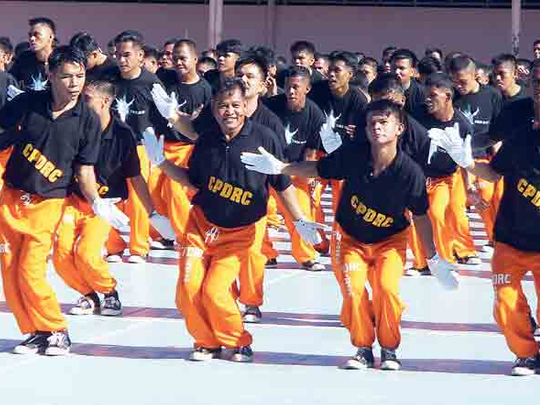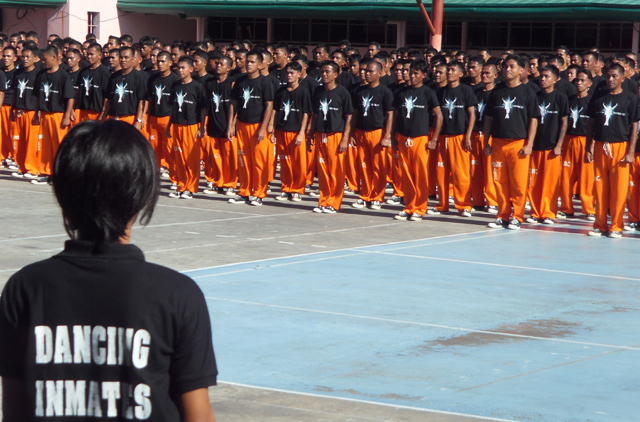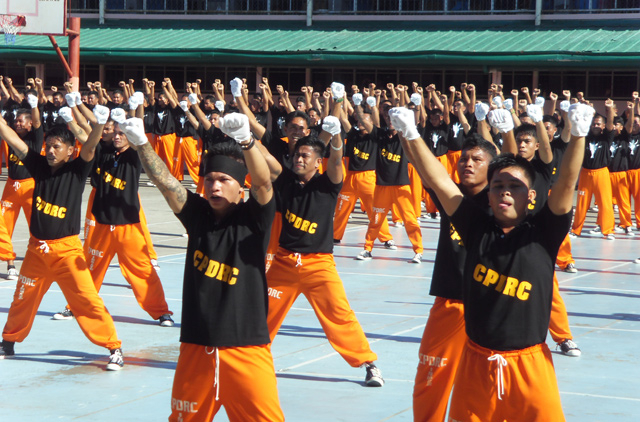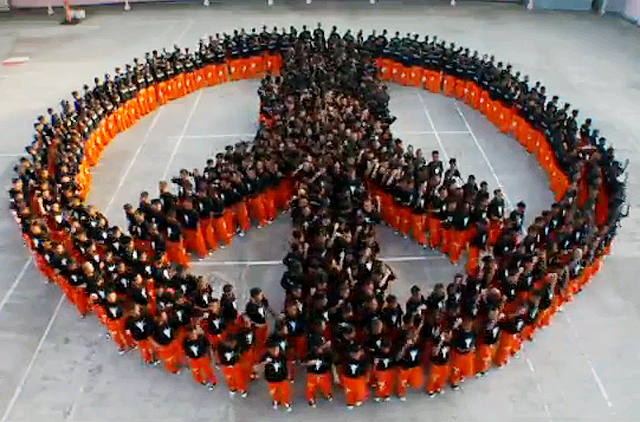
You could say that a revolution is thriving at the Cebu Provincial Detention and Rehabilitation Centre (CPDRC). A dance revolution, that is.
Inmates in this high-security prison in Cebu, the Philippines, are part of what experts have hailed as a trailblazing rehabilitation programme for prisoners. It has also turned out to be the world's first synchronised dancing of inmates.
CPDRC's star attractions spend a good two hours on dance practice everyday. Their incentive is simple: They dance to keep their minds and body fit, improve self-esteem and prepare for their popular monthly "show".
CPDRC's dancing inmates started to gain worldwide recognition when then-prison director Byron Garcia started posting videos of their performances on the video-sharing website YouTube. The videos continue to get millions of hits.
Among their first web hits was a performance of Michael Jackson's Thriller. The video racked up more than 20 million views, which led the late singer's long-time choreographer, Travis Payne, to fly to the Philippines early this year to dance with the inmates.
It reportedly took Payne and his two assistants just two days to perfect the dance moves to Jackson's This Is It.
The inmates' popularity has been fuelled further by local and international news articles and broadcasts, including a documentary by the BBC.
In the Philippines the inmates have a celebrity fan base, performing along with stars of reality show Pinoy Big Brother. They were also the opening act of a recent entertainment show by TV network GMA.
The archbishop of Cebu also visited them at the prison, where they gave him six surprise dance numbers. Archbishop Ricardo Cardinal Vidal later told reporters that it was "a marvellous show of discipline".
Who started it all? Former prison director Garcia is credited with coming up with the idea of the dance-exercise programme.
Garcia's choreography was initially just getting the inmates to march to the beat of the drum, but they later progressed to choreographed modern dance routines. On his YouTube page, Garcia said he hopes to spread his "music and dance therapy" to all jails in the Philippines and hopefully the rest of the world.
Garcia said prison facilities in the Philippines have become "living hells" because prisoners "are missing out the essence of compassion, redemption and restoration in jail management".
"We are too busy looking for creative ways to punish an offender instead of restoring him to become the human being that he is. We have to look at prisons beyond the cycle of crime and punishment and certainly look inside underlying social, cultural and scriptural implications of rehabilitation. As it is, those creative ways of punishing offenders that have led to restrictive and punitive conditions in jails have also made demons out of prisoners," Garcia wrote.
Garcia said the therapeutic use of dance and music was meant to "restore dignity to people who suffer the stigma of incarceration and restore self-esteem to inmates because they are alienated from society. ... Music is a protocol to heal the emotional and psychological trauma related to their offence or incarceration."
Despite this, the programme is not without criticism. Readers' comments on YouTube question whether the programme is just another form of exploitation. There have also been claims that prisoners are being forced to participate in dance activities.
Garcia responded with a video message, saying: "There are sick people who think that dancing is a form of cruel punishment! Since when was dancing categorised as punishment? My fellow citizens of the world, cruel and violent forms of punishment are a thing of the past.
"If we make jails a living hell for the prisoners, then we might just be sending out devils once they are released and re-integrated to society."
Helping Garcia implement the dance therapy is CPDRC choreographer Vince Paras Rosales, who told Weekend Review he is proud that the prison was the first to come up with a positive concept for rehabilitation of inmates through synchronised dancing.
But how difficult is it to get hardened criminals to dance? Apparently very difficult at first, he revealed. "But eventually we coaxed everyone into participating and now they are the ones coming to us for more dance training," he said, adding that it only takes two days of practice to train the inmates on new dance moves.
Does everyone get to dance? "Unfortunately no," Rosales said. "People with disabilities or sickness are exempted. Although many inmates are eager to perform, we have to implement a screening process."
Who gets to choose the songs? Rosales said he chooses what is popular at the time, although he will also consider suggestions from inmates and guests who visit the jail to watch the dances. Radio Gaga, Footloose, Rico Mambo, I Need a Hero by Bonnie Tyler, The Hustle and Bebot by the Black Eyed Peas are among the many songs in their growing dance repertoire.
Have there been inmates who refused to leave jail because they wanted to continue dancing? "Oh no," Rosales said with a laugh. "But many of those who have been released from jail come back to watch and encourage the others."
The dancing inmates perform to a crowd of visitors on the last Saturday of every month. Entrance is free, although visitors will have to register first to get admission on a first come, first served basis.
It is obvious that the live performance serves as a boost to the prisoners' morale. Melcris Hipolito, jailed for illegal recruitment, said the dance programme inspires him. He plans to pursue dance choreography when he gets out of jail. "I want to continue dancing," he said.
The programme also serves as an inspiration to the hundreds of visitors who turn up at CPDRC.
Max Antonio from Germany said he came to visit the Philippines mainly to watch the dancing inmates. "I think it is an amazing programme that teaches people to respect people in rehabilitation," Antonio said.
Tina Borg, a visitor from Finland and a specialist on alternative rehabilitation programmes for prisoners, said she was impressed with the rehabilitation programme at CPDRC. "Surely, it is a modern and humane approach."
Meanwhile, the inmates at CPDRC are busy preparing for the next show, dancing their way to clean living, as it seems, one step at a time.
The dancing inmates perform on the last Saturday of every month at the Cebu Provincial Detention and Rehabilitation Centre in Cebu City, Philippines. Show starts at 3pm. Entry is free but registration is a must at the Cebu Capitol Provincial Office. Admission is on a first come, first served basis.
















